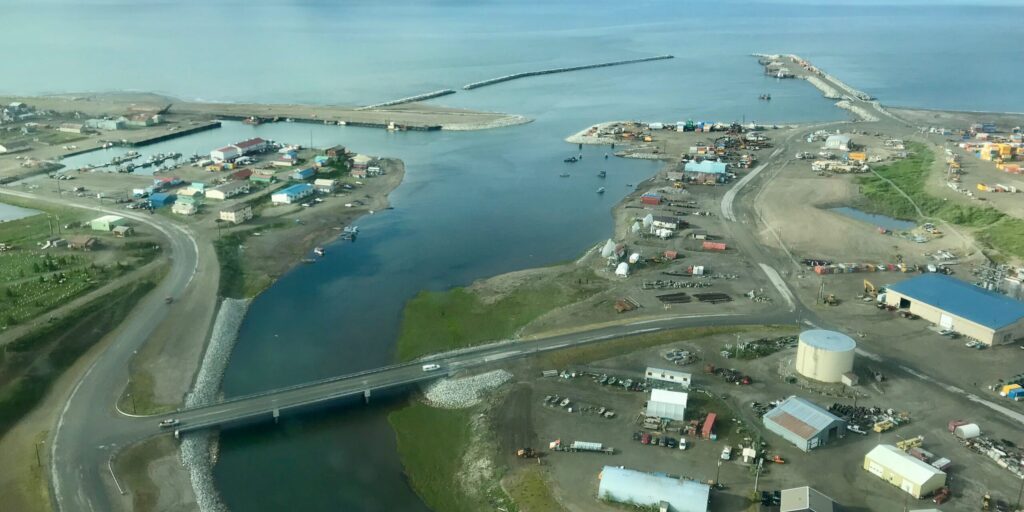Nome residents had the chance to share their thoughts about a potential deep draft port in Nome Tuesday night during a “community outreach” meeting hosted by the U.S. Army Corps of Engineers.
Lifetime Nome resident Ukallaysaaq Okleasik spoke up in favor of the plan proposed by the Corps. He says,
“The climate has changed, the world has changed, and we need to be ready as a community.”
The plan, released in early May, would extend the West Causeway to 3,844 feet, creating a deep-water basin of 40 feet below the mean low water level and repositioning the East Breakwater into a causeway. That is meant to separate larger, commercial traffic from smaller, pedestrian traffic at the Nome Port.
Okleasik and others pointed out that there is already increased ship traffic in the Bering Strait region and that a deep draft port in Nome would have economic benefits. Several people noted that they would want the Port to be equipped for emergency and oil spill response.
Some of the objectives listed by the Corps include: “improved navigations access to the community,” “decreased economic damages,” and “improved viability and safety of smaller communities that rely on Nome.”
But not all present had faith in those statements. Nome’s Austin Ahmasuk noted that the cost of living in Nome has never gone down, nor has inflation ever been negative.
“This is port development for the sake of port development.”
He said that subsistence hunters in small boats could be forced into different zones and currents to navigate around the port and that, in the past, port construction has destroyed Alaska Native cultural sites.
Others in the meeting supported the deep draft port but also agreed that there needs to be more dialogue between Nome and the surrounding tribes and communities who would be impacted by increased maritime traffic.
The corps did say that remains of an old village could be beneath the planned site of the East Causeway but that those are buried deeper than the planned construction. The project would be required to halt for archeological or cultural discoveries. Matthew Michaels of Nome reminded the Corps that local culture is more than artifacts, but also that the subsistence way of life needs to be protected with the new port.
Kelly Eldridge with the Corps says the agency has been corresponding with Nome Eskimo Community and sent invitations to other tribes but hasn’t received responses yet.
The meeting was recorded and will be transcribed to help the U.S. Army Corps of Engineers with further project development. The Corps continues to accept written and verbal comments on the port modification study from all members of Bering Strait communities.
Image at top: The Port of Nome at the mouth of the Snake River, June 2018. Photo: Gabe Colombo, KNOM.




